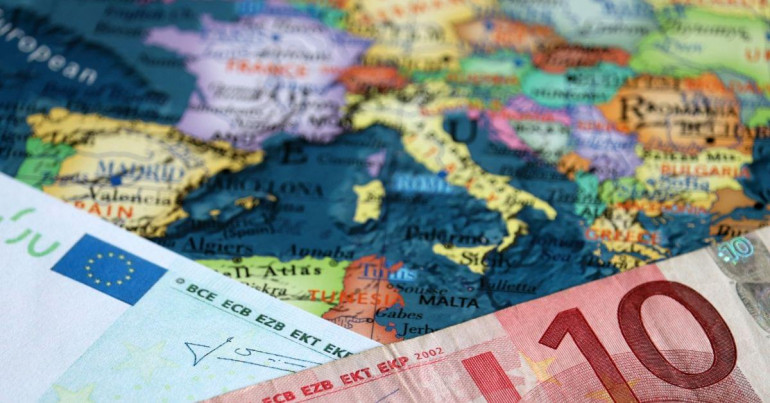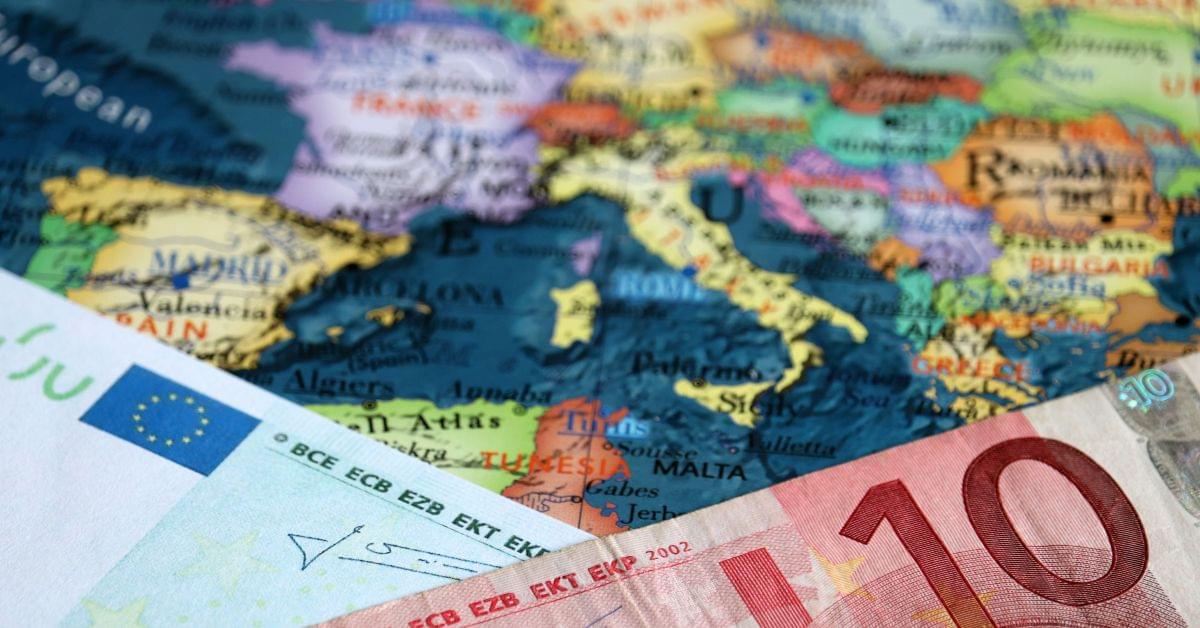
As Croatia joined the Euro in 2023 as its 20th member, we will be exploring and recapping the concept of the currency union in this article.
A currency (or “monetary”) union is when two or more countries or economies share a currency. The union is a coordination mechanism between countries, it helps to coordinate economic and monetary policies in order to reduce the costs of cross-border trade. In addition, the removal of physical barriers between nations tends to boost overall economic growth.
The most prominent example of a currency union is the eurozone, which consists of 20 members that will share the Euro as their currency from 2023, with Croatia having joined this year.

Historic currency unions
Currency unions have in one or another form existed since the antique in Roman times.
In more recent history, two currency unions are well known, one of which led to the creation of a new, unified country (the German Empire in 1871), while the other one ultimately failed.
The German Zollverein
The German Zollverein was one of the first attempts to create a single currency and was successful in securing the political unification of Germany. It was a series of laws designed to standardise the different systems of coinage, weights and measures used throughout the German area, allowing a variety of coins to be minted and used by the different states preceding the empire which was founded in 1871. By 1876, the Prussian Bank had become the Reichsbank, controlling all coinage and paper money, and Germany’s single currency – the Reichsmark – was stable enough to go on the gold standard.
Latin monetary union
The Latin Monetary Union (LMU) was another 19th-century attempt to provide a unified and regulatory framework for the economies of several countries in Europe, by setting a fixed standard of converting coins of other countries into French gold francs, which again were backed by gold on a fixed ratio. The union was officially established by France, Belgium, Italy and Switzerland, with Greece joining a year later. The primary aim of the LMU was to bring the countries’ currencies into close alignment and standardisation, in order to facilitate increased trade and investment links between them.
However, the union ultimately failed due to a number of factors. Primarily, the lack of a strong overarching administrative body, such as a central bank, meant that its members were unable to manage the union effectively.
Current currency unions
While almost everyone understands the Eurozone is a currency union, there are two other prominent examples of currency unions which are established around the globe.
The CFA Franc
The CFA Franc is a monetary union of 14 countries in West and Central Africa. It is used throughout the Central African Economic and Monetary Community, or CAEMC. All 14 member countries have agreed to use the CFA franc, a name that refers collectively to two separate currencies, as their sole legal currency and to accept each other’s currencies, the West African CFA franc and the Central African CFA franc, at par.
Currently, the CFA Franc is pegged to the Euro at a fixed rate and the currency is widely accepted in other African countries for trade and services. The CFA Franc has been a very successful currency union, providing greater stability and a measure of regional solidarity in times of economic hardship.
Eastern Caribbean dollar
The Eastern Caribbean dollar is the currency of six countries in the Eastern Caribbean Currency Union (ECCU) and two British Overseas Territories. The members of the union — Antigua and Barbuda, Anguilla, Dominica, Grenada, Montserrat, St Kitts and Nevis, St Lucia and St Vincent and the Grenadines — all use the Eastern Caribbean dollar as their official currency. It replaced the British West Indies dollar in 1965 and is issued by the Eastern Caribbean Central Bank (ECCB), which is based in St Kitts and Nevis. The Eastern Caribbean dollar has helped to ensure price stability and facilitate regional trade, and has been a very successful currency union overall.

Differences between a currency union and a currency board
A currency board, or currency peg, creates stability between trading partners and can last for decades. Countries typically peg their money to the currencies of other countries — usually to the US dollar, the Euro or a basket of other currencies. This creates stability between trading partners.
A currency union involves multiple governments
A key difference between a currency union and a currency board is the number of governments involved. A currency union typically involves several governments, as each member of the union is responsible for setting its own monetary policy. A currency board, on the other hand, is usually managed by a single government, which has sole responsibility for setting and maintaining the exchange rate.
A currency union offers greater economic autonomy
Another clear difference between a currency union and a currency board is the degree of economic autonomy that each offers its members. In a currency union, members typically retain influence over the shared monetary and complete independence regarding fiscal policy. A currency board tends to be stricter in its policies and regulations, which are influenced by the monetary policy of the country to which the currency is pegged, hence offering less autonomy in terms of conducting independent monetary policy.
A currency board is primarily used to promote price stability
The overall objective between a currency union and a currency board is not the same. A currency union tends to focus on creating a single economic area, while a currency board tends to focus on maintaining price stability.
Currency boards still in place in Europe today, such as Bulgaria’s currency board with the Euro, were introduced during periods of hyperinflation: Bulgaria pegged its currency to the Deutsche Mark in 1997 to end hyperinflation and the devaluation of the Bulgarian lev. The currency board is a legacy of that period, while Bulgaria is planning to adopt the Euro in 2025.
A currency board does not offer intra-union payments
A currency board does not provide a mechanism for payments between members of the union. This means that intra-union transactions have to be made using another form of payment, such as a bank transfer, a letter of credit or even a different currency. For example, Montenegro uses the Euro as its currency but is not part of the SEPA banking area.
Are you in need of sending foreign currency across the globe? Currencytransfer offers a high quality service via a network of FCA authorised partners. Sign-up for an account today and your dedicated account manager will be happy to help you transfer currency safely.
G.C. Wagner
Gustav Christopher is a writer specialising in finance, tech, and sustainability. Over 15 years, he worked in banking, trading and as a FinTech entrepreneur. In addition, he enjoys playing chess, running, and tennis.



